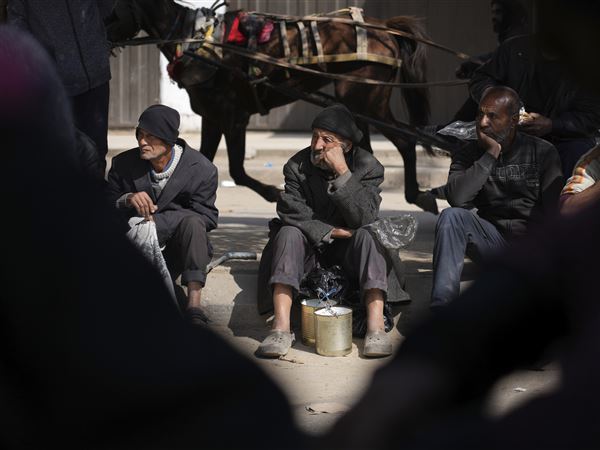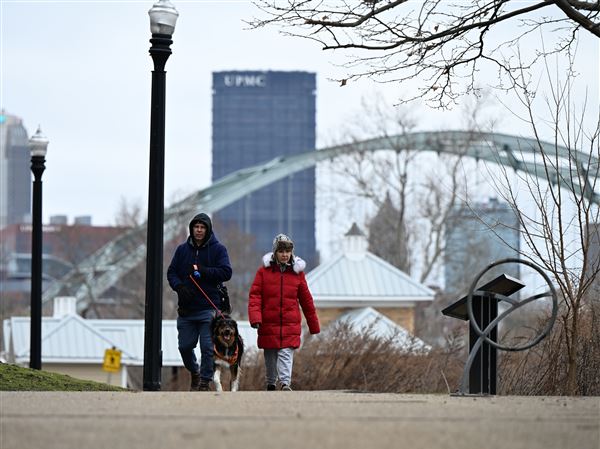In 1949, Al Meister, the head of a Chicago-based packaging company called Bagcraft Papercon, came up with an iconic American invention. He developed a special coating to make a paper bag grease-resistant. Onto the bag went the drawing of a dog and a poem by his wife beginning, "Oh where have your leftovers gone?" With that, the company laid claim to the world's first dedicated doggie bag.
Today, millions of doggie bags later, this contrivance for getting a free lunch out of your previous night's dinner is more popular than ever. In a 2002 survey, the American Dietetic Association found that 91 percent of Americans take leftovers home at least occasionally, and 32 percent do it on a regular basis.
The doggie-bag concept isn't confined to the land of the super-size portion. Food historian Francine Segan found references to it in England when she did research for her book on Renaissance cooking called "Shakespeare's Kitchen." She explains that hosts used "oversized napkins in those days, in part because they ate with their hands, but also to provide a huge container for leftovers. Hosts liked to get extra points with guests by being very generous with leftovers."
Now, the doggie bag has even penetrated into regions as remote as Guizhou Province in Southwest China. Late last year, we found ourselves in the little town of Panjiang, whose major industry happens to be restaurants specializing in the meat of -- well, let's just say it wasn't pigs or cows. Each table was set with not only chopsticks, plates and napkins but also a supply of doggie bags, illustrated with a drawing of a pooch.
Still, in many parts of the world, the doggie bag remains little-known -- or even frowned upon. To investigate the breadth of this sociological phenomenon, we dispatched reporters on three continents to have dinner on us, an assignment that no one turned down. The only proviso was that they leave scraps of almost everything (even in Tokyo, where most portions are small enough to be consumed in a couple of bites) and ask for doggie bags.
Their findings would surprise any American who considers a doggie bag a birthright. "Are you joking?" asked the waitress in Moscow's chic Galleria Cafe, where dinners run around $150 to $400 a person. Eventually, she brought the leftovers of an exquisite crab dish, plus plates of lamb and buckwheat, back to the table in an attractive paper bag with cloth handles custom-made for Galleria. But when we asked for the leftovers of bread and butter, she drew the line. She pretended not to hear us, backed away from the table and scurried out of sight.
The manager later explained why Galleria discourages takeaways. "We use fresh, high-quality products here," he said. "It makes no sense to let it grow old. Pasta dies after 20 minutes; things lose their taste."
In Paris, too, we got a look that might be translated as "Zut alors!" At the elegant La Braisiere, specializing in food of the French Southwest, our server was taken aback at our request to take the leftovers home. But since high-end Parisian restaurants make it a point to cater to patrons' whims, the packages arrived neatly wrapped in aluminum foil and plastic wrap, and labeled in black marker pen "fish" and "lamb." When the chef made the rounds of the dining room later that evening, we asked how many people request doggie bags. "None," he replied.
In London, which also doesn't have a doggie-bag culture, the waitress noted that the few people who asked for one were mostly those who had dogs at home. Our grilled lemon sole would hardly appear on a dog's top 10 list. Nevertheless, it was returned to the table in aluminum foil.
But when the scene shifted from Europe to Asia, the willingness to supply doggie bags surpassed even that in the U.S. At the Singapore branch of Morton's of Chicago, a steakhouse, we had a loaf of onion bread to munch on while perusing the menu. When the waitress came back to the table to make room for the massive steaks, she eyed the half-eaten loaf and said brightly, "Can I clear the bread, or can I pack that up for you to take home?" She was just as quick to pack up the remaining steak, with it all coming back to the table in a large, square white plastic bag containing three silver-foil bags stamped with the Morton's logo.
It's not only culturally OK to take away leftovers in Singapore; it's often expected, says Wong Bun Huge, president of the Restaurant Association of Singapore. "People here don't like to waste food and don't like to waste money," he explains.
In Bangkok, too, a doggie bag is the rule rather than the exception, at least at Thai and Chinese restaurants. But there are no cute dog illustrations or poems here. The food -- even scalding hot soup -- is usually poured into clear plastic bags tied at the top with a red rubber band.
In Tokyo, however, we were flatly turned down at a restaurant called Torafuku in a high-end shopping mall. "I'm sorry," said the waiter, "but we don't allow customers to take home any leftovers, no matter what they are." It turned out to be a policy dictated by the mall for all its restaurants, for reasons of hygiene. While there's no law against doggie bags in Japan, the nation's health ministry advises against them.
This advice would win plaudits from the American Dietetic Association, which warns that takeaway food isn't safe to eat unless it's refrigerated and then heated to a temperature of 165 degrees Fahrenheit. That requires a meat thermometer, the group says, and its survey found that 85 percent of Americans don't even own one.



CITY/RESTAURANT: Rio De Janeiro/Bazzar
WHAT WE ORDERED: Salad with goat cheese, filet mignon with apricot sauce and creamy brie cheese over rice
HOW THEY RESPONDED TO THE DOGGIE BAG REQUEST: Yes, with no questions asked and not a frown.
CITY/RESTAURANT: London/Roast
WHAT WE ORDERED: Grilled lemon sole
HOW THEY RESPONDED TO THE DOGGIE BAG REQUEST: With a polite raised eyebrow and a "yes, of course."
CITY/RESTAURANT: Paris/La Braisiere
WHAT WE ORDERED: Pate de foie gras, shoulder of lamb, red mullet
HOW THEY RESPONDED TO THE DOGGIE BAG REQUEST: The server looked taken aback, but said "certainly," without asking any questions.
CITY/RESTAURANT: Moscow/Galleria Cafe
WHAT WE ORDERED: Crab served with eggplant, buckwheat with onions and mushrooms, lamb ribs in buttermilk sauce
HOW THEY RESPONDED TO THE DOGGIE BAG REQUEST: Acceding reluctantly after asking if we were joking, and pretending not to hear the request to wrap up bread.
CITY/RESTAURANT: Bangkok/Crepes & Co.
WHAT WE ORDERED: Smoked salmon crepe, lamb couscous
HOW THEY RESPONDED TO THE DOGGIE BAG REQUEST: Agreeably.
CITY/RESTAURANT: Singapore/Morton's of Chicago
WHAT WE ORDERED: Cajun ribeye steaks
HOW THEY RESPONDED TO THE DOGGIE BAG REQUEST: It was so anticipated that they asked us if we wanted to wrap up the bread, too.
CITY/RESTAURANT: Tokyo/Torafuku
WHAT WE ORDERED: Steaks, tempura, grilled fish
HOW THEY RESPONDED TO THE DOGGIE BAG REQUEST: With a no, on the grounds that the shopping mall banned all doggie bags for reasons of hygiene.
First Published: October 5, 2006, 4:00 a.m.
















